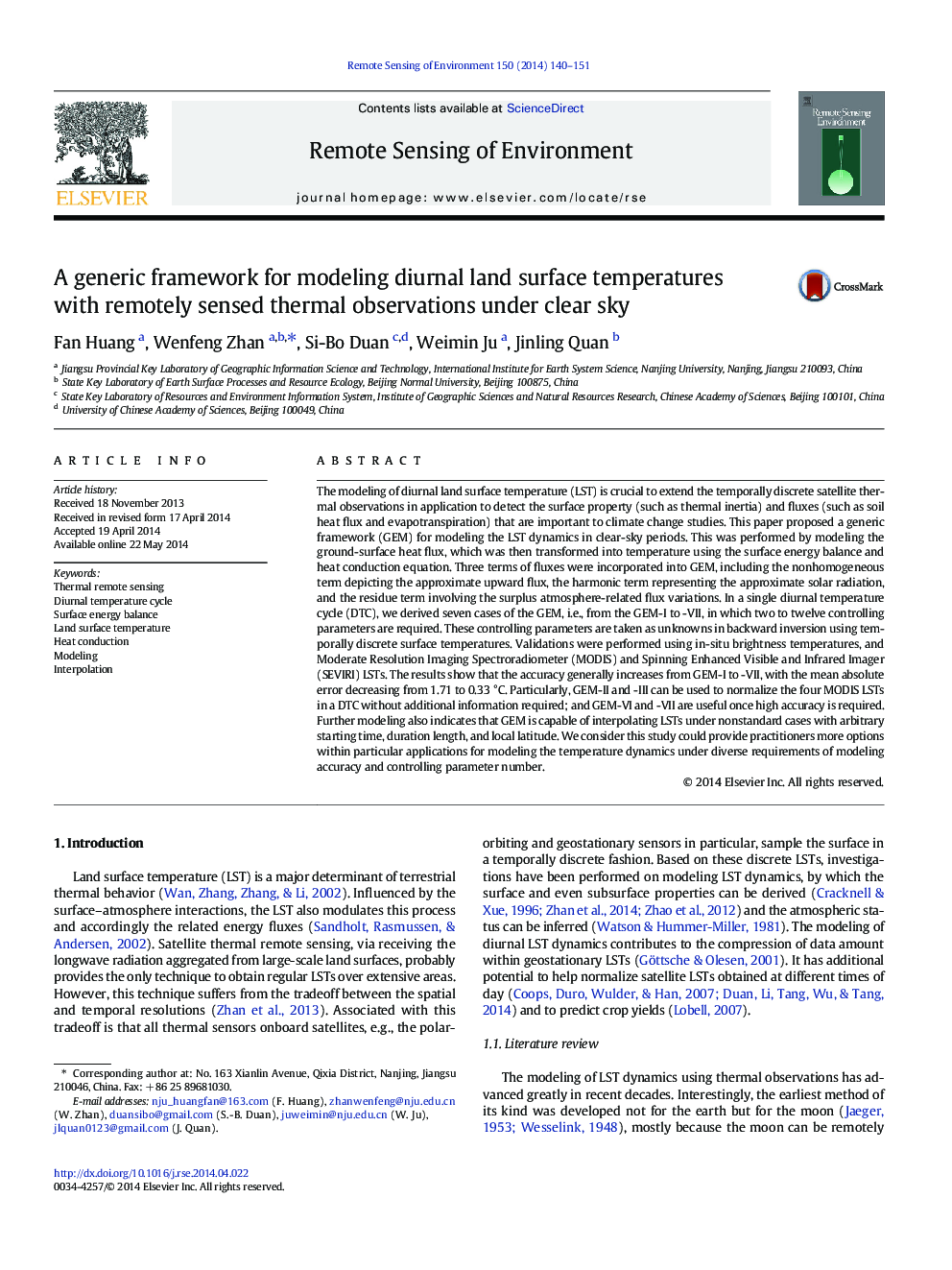| کد مقاله | کد نشریه | سال انتشار | مقاله انگلیسی | نسخه تمام متن |
|---|---|---|---|---|
| 6346655 | 1621250 | 2014 | 12 صفحه PDF | دانلود رایگان |
- A generic framework was proposed to model diurnal surface temperatures.
- Seven cases were derived to adapt different numbers of thermal observations.
- The four MODIS LSTs can be normalized without the use of additional information.
The modeling of diurnal land surface temperature (LST) is crucial to extend the temporally discrete satellite thermal observations in application to detect the surface property (such as thermal inertia) and fluxes (such as soil heat flux and evapotranspiration) that are important to climate change studies. This paper proposed a generic framework (GEM) for modeling the LST dynamics in clear-sky periods. This was performed by modeling the ground-surface heat flux, which was then transformed into temperature using the surface energy balance and heat conduction equation. Three terms of fluxes were incorporated into GEM, including the nonhomogeneous term depicting the approximate upward flux, the harmonic term representing the approximate solar radiation, and the residue term involving the surplus atmosphere-related flux variations. In a single diurnal temperature cycle (DTC), we derived seven cases of the GEM, i.e., from the GEM-I to -VII, in which two to twelve controlling parameters are required. These controlling parameters are taken as unknowns in backward inversion using temporally discrete surface temperatures. Validations were performed using in-situ brightness temperatures, and Moderate Resolution Imaging Spectroradiometer (MODIS) and Spinning Enhanced Visible and Infrared Imager (SEVIRI) LSTs. The results show that the accuracy generally increases from GEM-I to -VII, with the mean absolute error decreasing from 1.71 to 0.33 °C. Particularly, GEM-II and -III can be used to normalize the four MODIS LSTs in a DTC without additional information required; and GEM-VI and -VII are useful once high accuracy is required. Further modeling also indicates that GEM is capable of interpolating LSTs under nonstandard cases with arbitrary starting time, duration length, and local latitude. We consider this study could provide practitioners more options within particular applications for modeling the temperature dynamics under diverse requirements of modeling accuracy and controlling parameter number.
Journal: Remote Sensing of Environment - Volume 150, July 2014, Pages 140-151
